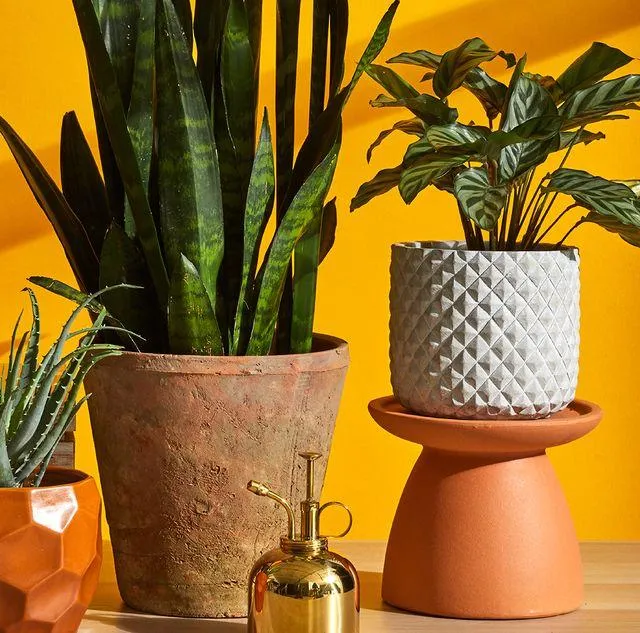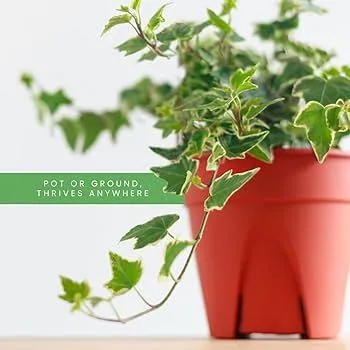The Complete Guide to Growing English Ivy Indoors
Growing English ivy as a houseplant can bring a touch of greenery to your home that looks good and is almost impossible to kill. As someone who has spent years cultivating all sorts of indoor plants, I’ve found ivy to be one of the easiest to care for. Here are the basics on getting English ivy to flourish inside your walls.
Choosing the Right Ivy Variety
When starting out, you’ll want to select a type of English ivy (Hedera helix) that thrives indoors. The most common varieties grown as houseplants include ‘Baltica’, which has dark green leaves with light veins, and ‘Needlepoint’, with smaller, compact leaves. You can find these and others at most garden centers or home improvement stores. Kind of check the tags to pick one suited for indoor conditions with bright, indirect light.
Potting and Soil Requirements
Ivy does best in containers with drainage holes so excess water can escape. Terra cotta, plastic, or ceramic pots all work well. Fill the bottom with rocks or clay pebbles for added drainage before adding potting mix. I like to use regular potting soil mixed half and half with perlite or bark to keep it from becoming too dense. The roots need moisture but also good aeration.
Light and Water Needs
English ivy thrives in medium to low light, so it’s great for areas in your home that don’t get direct southern exposure. It can even tolerate some shade, though growth will be slower. As for water, the soil should be kept consistently moist but not soaked. Stick your finger in to check the top inch or so before watering. I usually water mine about once a week in spring and summer, less in winter when growth slows.
Fertilizing and Pruning Tips
To keep ivy looking its best, fertilize monthly during spring and summer using a well-balanced houseplant food diluted to half strength. Stop fertilizing by late summer so new growth has time to harden off before winter. Pruning keeps ivy bushy and promotes branching. Simply snip stems back by a few inches using clean pruners. You can root cuttings in water to start new plants!

Dealing with Pests
Unfortunately, every gardener’s nightmare insect called spider mites can be a problem for ivy. These tiny pests suck sap from leaves, leaving them scarred and yellowed. If you spot webbing or mites, isolate the plant and hose it down outside with a strong spray of water to dislodge the critters. Neem oil or insecticidal soap also help control outbreaks if used as directed. Fingers crossed you never have to face that mess!
Ideal Growing Conditions
Now that you’ve got the basics down, here are some tips to maximize your ivy’s growth indoors:
- Locate it in a spot with morning sun and bright, indirect light the rest of the day – near an east-facing window is ideal
- Keep soil evenly moist but not soggy with tepid water – mist leaves to boost humidity
- Use a soil thermometer to maintain temp between 60-75°F – cooler in winter is okay
- Fertilize in spring and summer only with a balanced product – too much food can cause burned tips
- Prune to shape as desired and encourage thick growth – cut 4-6 inches above a leaf set
- Wipe leaves weekly with a damp cloth to remove dust – shiny foliage means healthy ivy
Dealing with Bugs and Brown Tips
A few other issues can crop up with indoor ivy that are easy fixes:
Brown Leaf Tips
Brown edges or spots could be from dry air, minerals in tap water, or over-fertilizing. Increased humidity, using distilled water for a while, and laying off the plant food should clear it up.
Mealybugs
These fluffy white pests suck sap and spread rapidly. Wipe leaves with isopropyl alcohol on a cotton ball to kill any bugs visible. Repeat weekly as needed until they’re gone for good.

Scale Insects
Sticky, hard-shelled brown or black dots are a sign of scale. Scrape them off carefully with a fingernail or cotton swab dipped in rubbing alcohol. Their waxy coating protects them, so you may have to repeat every few days for two weeks.
Propagation and Overwintering
Want to try your hand at propagation? Clip 4-to 6-inch vine stems, remove the bottom set of leaves, and place the stems in a glass of water in indirect light. Within weeks you’ll see roots starting to form. Once established, transplant the rooted cuttings into potting mix. As for overwintering, move ivy to a spot with cool temps around 50-60°F with less sunshine through winter. Water sparingly and resume regular care in spring.
Final Thoughts on English Ivy Indoors
Hope this guide gave you a sense of basically everything you need to know to grow lush, healthy English ivy at home! Kind of let me know if you have any other questions. From my experience, once established, this plant is pretty much impossible to kill off. With the right care, you’ll be enjoying your lovely indoor garden for years. Happy gardening!
How to Grow English Ivy Indoors
| Light Needs | English ivy prefers bright, indirect light. East or west facing windows provide the ideal lighting conditions. |
|---|---|
| Soil | Well-draining potting soil specifically formulated for houseplants. English ivy tolerates some dryness between waterings. |
| Water | Water whenever the top inch of soil is dry. Allow excess water to drain from the saucer. Avoid overwatering which can cause root rot. |
| Temperature | English ivy grows best between 60-75°F. It can tolerate temperatures as low as 50°F for short periods. |
| Humidity | English ivy appreciates moderate humidity between 50-60%. Mist leaves occasionally if growing in a dry environment. |
| Growth Rate | English ivy is a vigorous grower, increasing several inches per year. Prune as needed to maintain a bushy appearance. |
FAQ
-
What soil should I use for planting english ivy indoors?
You’ll want to use a well-draining potting soil. English ivy grows pretty well in most regular potting mixes. Make sure the soil drains well so the roots don’t sit in water. A basic potting soil should work great.
-
How much sunlight does english ivy need indoors?
English ivy can grow in low to medium light conditions inside. It does best in a spot with bright, indirect sunlight for at least several hours per day. Direct blazing sun may cause the leaves to burn, so protect it if it’s in a south-facing window. Nevertheless, it can survive in lower light, just won’t grow as quickly.

-
How do I water english ivy planted indoors?
Water english ivy when the top inch or so of soil is dry. Feel the soil with your finger. Overwatering is the main killer of indoor ivy, so water just enough to moisten the soil without letting it get soggy. At the same time, don’t let it dry out completely either. The soil should be consistently moist, but not soaked.
-
When should I repot english ivy that’s grown too large for its container?
If the roots have filled the container and are circling around the bottom, it’s time for a bigger pot. Pot up into a container only one size larger to minimize stress on the plant. Repotting every 1-2 years is usually sufficient for ivy. Always loosen any bound or crowded roots before replanting. You don’t want to strangle those roots!
-
Can english ivy climb or trail if grown indoors?
Yes, english ivy can be trained to climb or cascade downward from hanging baskets or poles. Use wire, string, twine or plant ties to gradually guide the stems where you want them to grow. The straplike leaves will gently weep over the sides of containers or poles for an attractive accent. Over time it may develop pretty cascades without support too.
-
How do I prune or shape an overgrown english ivy?
You can trim ivy any time to tame its growth or shape it. Cut stems back to the desired height or remove long straying runners. Cut just above a set of leaves and the plant itself will hardly notice. After pruning, the ivy may look a bit unkempt at first but will busily send out new growth to fill in gaps. Always use clean pruners so you don’t spread disease.
-
Does english ivy require fertilizer when grown indoors?
Fertilizing your english ivy probably isn’t absolutely necessary indoors, but a diluted liquid houseplant fertilizer every few months in the growing season can’t hurt! It’ll reward you with lush foliage. But is fertilizer worth it if the ivy seems content? Perhaps just enjoy your low-maintenance ivy as is if it’s doing well without. Up to you!

-
Why do the tips of my english ivy’s leaves curl or brown?
Brown or curled leaf tips generally mean the soil is staying too wet. Allow the soil to dry out more between waterings. It could also be a sign the plant needs more sunlight exposure. Moving it to a sunnier spot may help. Leaf tip burn and curling are common issues for ivy – with the right care it will still look lovely!
